|
In a blackened gorge, high in the Catskills, there once lived an eagle. Unlike her peers, however, this eagle could not fly. It seemed that when she was an eaglet she had fallen from her nest high upon a rocky ledge into the crevasse below.
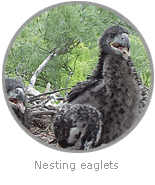 The fall had left her with a few broken feathers and a slightly irregular beak, but these injuries quickly healed. The most devastating and enduring damage was done to her spirit. Try though she might, she could not conjure up the courage to defy the forces of gravity again. The fall had left her with a few broken feathers and a slightly irregular beak, but these injuries quickly healed. The most devastating and enduring damage was done to her spirit. Try though she might, she could not conjure up the courage to defy the forces of gravity again.
Once a well-intentioned hawk picked her up in his talons and flew her to the top of a cliff. He coaxed and cajoled but every time she would look down into the gorge, her fear became consummate and she could not attempt even the slightest flutter. Finally, in complete frustration, the hawk pushed her over the edge, believing that her instincts would make her fly and she would survive.
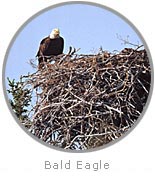 Survive she did, but she still did not fly. Grasping desperately at the sides of the canyon walls, she was able to break the speed of her descent. She landed once again at the bottom of the gorge and vowed never again to leave its safety. Survive she did, but she still did not fly. Grasping desperately at the sides of the canyon walls, she was able to break the speed of her descent. She landed once again at the bottom of the gorge and vowed never again to leave its safety.
Over the years she became quite adept at handling the awkward situations which arose when other birds would question her flightless existence.
"I choose not to fly," she would say, while strutting with pseudo arrogance across the floor of the canyon.
"I have better things to do, like building my nest."
"Flying is silly. There's nothing up there but air anyway - nothing to see, really."
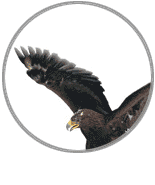 These were a few among her many excuses. Some believed her, while others questioned to themselves. But none called her to task, for basically they found her to be a good friend, and they did not wish to hurt her. These were a few among her many excuses. Some believed her, while others questioned to themselves. But none called her to task, for basically they found her to be a good friend, and they did not wish to hurt her.
Then, one morning just at dawn she saw a golden eagle drifting above her. He seemed to be testing the currents, preparing for his ascent. He suddenly turned upward and soared into the clouds but not before his piercing eyes had noticed the frightened Catskill eagle far below him. She looked down as she always did, for even watching flight made her tremble. Still she saw his shadow receding as he climbed higher and higher. Just when she thought he had gone, the shadow became larger. Before she knew it, he had landed next to her.
"Why aren't you taking advantage of this lovely day?" he asked.
"I choose not to fly," came the automatic response.
The golden eagle looked into her eyes and then traced the contour of her wing with his own.
"Then why do your eyes widen and your feathers quiver when you but say the word fly? I can see that you're afraid, but if you will let me I can help you."
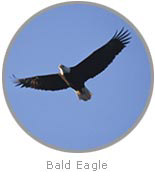 Then, ever so carefully, he picked her up, tucked her under his wing, and carried her aloft. Once more, she peered into the dreaded gorge and froze with terror. Then, ever so carefully, he picked her up, tucked her under his wing, and carried her aloft. Once more, she peered into the dreaded gorge and froze with terror.
"Don't look down! Don't ever look down!" he said. "See the beautiful sky? Just beyond it lie the heavens. Feel the gentle air? It's lifting you so that you may see and know the joy that is waiting for you there. Have faith and trust in me, for what I say is true."
Miraculously, her fears left her and she took her first, tremulous flight. And suddenly her existence had grand new dimensions.
Once in a while she would look down and the old fear would return. But she reminded herself of the words of the golden eagle: "Look up into the heavens and you can fly."
And once again she would.
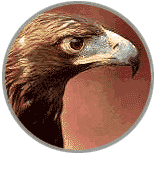 Thereafter, the two eagles became inseparable. Each day they came to care more and more for each other - not just as fliers, but as eagles - and each day they soared to greater and greater heights, until one particularly glorious afternoon when the little Catskill eagle truly understood the meaning of eternity. And she felt beautifully at peace. Thereafter, the two eagles became inseparable. Each day they came to care more and more for each other - not just as fliers, but as eagles - and each day they soared to greater and greater heights, until one particularly glorious afternoon when the little Catskill eagle truly understood the meaning of eternity. And she felt beautifully at peace.
Then she said to her golden eagle, "Thank you for teaching me to soar."
And he looked at her for a long time before he wisely replied:
"But I did not teach you to soar. I simply taught you to trust."
It Follows:
Only when we have learned to trust can we ever be ready to love, free to soar, capable of grasping eternity.
The Catskill Eagle was written and narrated by Julie Reder Fairley. Character voices were provided by Anthony Reece and Evelyn O'Dwyer.
|